Revised Recommendations for the Treatment of Infants Diagnosed with Spinal Muscular Atrophy Via Newborn Screening Who Have 4 Copies of SMN2
Dear Editor:
In early 2018, Cure SMA convened a group of expert clinicians and scientists to develop a treatment algorithm using a reiterative surveying modified Delphi technique for infants diagnosed with spinal muscular atrophy (SMA) via newborn screening (NBS). The findings and recommendations of this group were previously published here in May 2018 [1].
The working group first developed a treatment algorithm for the administration of an SMN-upregulating treatment based upon genotype following a positive NBS result. The initial decisions for this algorithm were based on the correlation of SMA genotype to phenotype across multiple studies. SMA types 1 and 2 represent a large majority, greater than 90%, of SMA cases and account for the bulk of those who have three or fewer copies of SMN2. The working group unanimously recommended immediate treatment for individuals predicted to manifest SMA with the qualifying genotypes of two or three copies of SMN2, as supported by the strong positive results arising from pre-symptomatic infants in the NURTURE trial [2].
In September 2019, Cure SMA reconvened our multidisciplinary working group to reassess the treatment algorithm for newborns with SMA identified through newborn screening based upon new experience and therapeutic options. We now wish to address the changing landscape of potential burden and benefit associated with early treatment of infants diagnosed with SMA via newborn screening who have four copies of the SMN2 gene.
Previously, the working group did not reach a consensus, and thus, did not issue a recommendation on whether to immediately treat or conduct watchful waiting for infants with four copies of SMN2. The group was nearly equally split on this decision and, therefore, referred the decision to the infant’s healthcare provider (n = 13). Our recommendation was for a personalized decision about which course to take for these patients by their parents and physicians.
When the working group reconvened, there was agreement that there was sufficient new clinical data and real-world experience to warrant revisiting the previous lack of recommendation for infants diagnosed with SMA via NBS who have four copies of SMN2. Reiterative surveying was conducted as detailed in the original publication and a meeting was held to discuss the recommendation. The working group has updated our position to a recommendation for immediate treatment for infants diagnosed with SMA via NBS with four copies of SMN2 (n = 12). 11 members voted for immediate treatment and one member voted for watchful waiting (one original working group member has since moved to a pharmaceutical company and abstained due to conflicts of interest). The working group also revisited the published recommendation to wait to treat for infants with five copies of SMN2 and unanimously voted (n = 12) to uphold that recommendation of watchful waiting. No other recommendations were revisited and remain as stated in the original publication.
The working group noted that the recent publication of data from Biogen’s NURTURE clinical trial shows the dramatic impact from early nusinersen treatment, with data showing that treatment under six weeks of age in patients with two or three copies of SMN2 is significantly better than treatment after six weeks of age [2]. Patients enrolled in this trial with two copies of SMN2 have a dramatically altered disease course with 100% alive, 100% sitting, 88% walking with assistance, 77% walking independently, and none needing the use of permanent ventilation assistance. Critically, disease has been largely prevented in the patients with three copies of SMN2, as these patients have met motor milestones on schedule and currently do NOT manifest clinical signs of SMA. The working group argues the same predicted outcomes would apply for patients with four copies of SMN2 as to those with three copies. With early treatment, disease would be mostly eradicated in presymptomatic patients with four copies of SMN2. Additionally, the SMN1 replacement gene therapy onasemnogene abeparvovec is now approved for all genotypes of patients under two years of age, also pushing toward treatment instead of waiting. The working group also noted that the presence of anti-AAV antibodies may preclude treatment with onasemnogene abeparvovec and children are more likely to develop antibodies as they age.
Decisions about initiation of treatment, when not done immediately, are still dependent on the presence of any clinical or subclinical signs of SMA, such as weakness or decrease in amplitude of the compound muscle action potential (CMAP). These symptoms are reflective of already occurring motor neuron dysfunction or loss. The working group recognizes the potential use of neurofilament as a predicative biomarker for SMA, once further validated, but this is not yet utilized in clinical practice. Critically, the working group notes that the loss of even a small number of motor neurons is unacceptable when effective treatment is available, as this loss cannot be reversed after onset but can be prevented with earlier treatment.
The working group does acknowledge that current laboratory assays designed to detect SMN2 copy number often have difficulty distinguishing high copy numbers of SMN2 and that many laboratories report results as four or more SMN2 copies, being unable to give an exact number. Recognizing this fact, the working group encourages follow-up with a laboratory able to distinguish exact SMN2 copy number. Many genetics laboratories are currently working to improve their SMN2 copy assays and the group is confident these assays will improve.
In summary, the working group is issuing this letter to update our recommendation for infants diagnosed with SMA via NBS with four copies of SMN2 to immediate treatment.
Sincerely,
 |  |
| Jacqueline Glascock, PhD1 | Jacinda Sampson, MD, PhD2 |
 |  |
| Anne M. Connolly, MD3 | Basil T. Darras, MD4 |
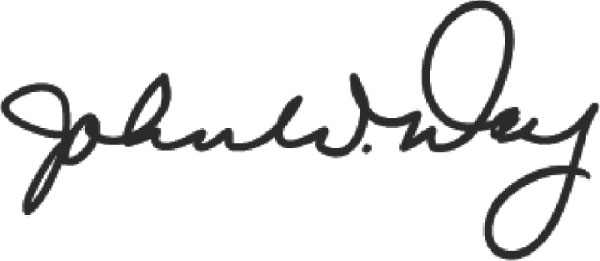 | 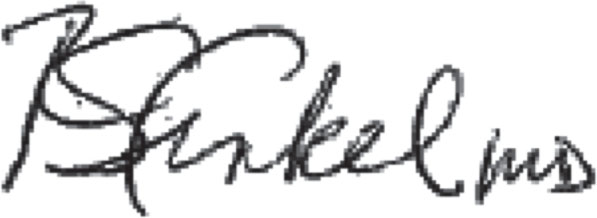 |
| John W. Day, MD, PhD2 | Richard Finkel, MD5 |
 |  |
| R. Rodney Howell, MD6 | Katherine W. Klinger, MD7 |
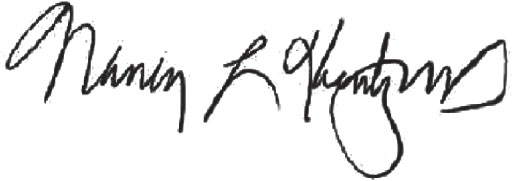 |  |
| Nancy Kuntz, MD8 | Thomas Prior, PhD9 |
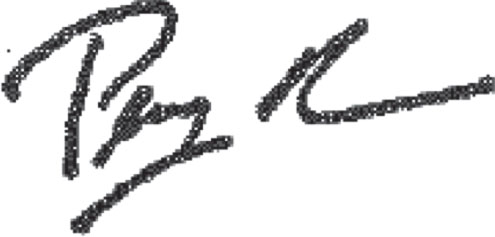 |  |
| Perry B. Shieh, MD, PhD10 | Thomas O. Crawford, MD11 |
 | 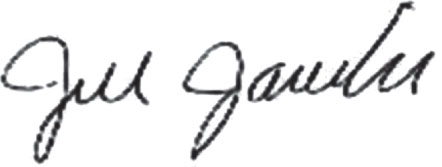 |
| Douglas Kerr, MD, PhD12 | Jill Jarecki, PhD1 |
1. Cure SMA, Elk Grove Village, IL, USA.
2. Stanford University, Stanford, CA, USA.
3. Washington University School of Medicine, St. Louis, MO, USA.
4. Department of Neurology, Boston Children’s Hospital, Boston, MA, USA.
5. Nemours Children’s Hospital, University of Central Florida College of Medicine, Orlando, FL, USA.
6. Miller School of Medicine, University of Miami, Miami, FL, USA.
7. Genzyme Corporation, a Sanofi Company, Framingham, MA, USA.
8. Ann & Robert H. Lurie Children’s Hospital of Chicago, Chicago, IL, USA.
9. Department of Molecular Pathology, Ohio State Wexner Medical Center, Columbus, OH, USA.
10. University of California Los Angeles, Los Angeles, CA, USA.
11. Departments of Neurology and Pediatrics, Johns Hopkins University, Baltimore, MD, USA.
12. Generation Bio, Cambridge, MA, USA.
DISCLOSURES
JJ and JG: Employees of Cure SMA and have no financial stake in any SMA drug or company involved in developing SMA drugs.
JS: Co-investigator on SMA clinical trials sponsored by Biogen, Roche, AveXis, and Cytokinetics. No grants or advisory boards, no stock held.
AMC: Reports advisor/consultant for AveXis, Sarepta, and Roche; In past two years, principal investigator for clinical studies for PTC Therapeutics, Pfizer, Fibrogen, NS Pharma; Biogen, AveXis, Cytokinetics, Sarepta, and Italefarmeco; currently sub investigator for clinical studies for AveXis and Sarepta; and member of data management and safety monitoring board for Catabasis.
BD: Serves on advisory boards for AveXis, Biogen, Vertex, Cytokinetics, Genentech, Roche, and Sarepta; grants from Cytokinetics, FibroGen, Ionis/Biogen Pharmaceuticals, Inc. (during ENDEAR, CHERISH, CS12, CS11), National Institutes of Health (National Institute of Neurological Disorders and Stroke), PTC, Sarepta, AveXis, Roche, Slaney Fund for SMA, SMA Foundation, and Summit.
JD: Has received grants for research trials from: Biogen; Ionis Pharmaceuticals; Cytokinetics; Roche Pharmaceuticals; AveXis; Sanofi-Genzyme; Sarepta Therapeutics; Scholar Rock in addition to NIH, MDA, PPMD, Myotonic, Cure SMA and SMA Foundation. He has served as a consultant for: Biogen; Ionis Pharmaceuticals; Roche Pharmaceuticals; Novartis; Cytokinetics; Pfizer; AveXis; AMO Pharmaceuticals; Sarepta Therapeutics; Santhera Pharmaceuticals. He has patents licensed to Athena Diagnostics for genetic testing of myotonic dystrophy type 2 (US patent 7442782) and spinocerebellar ataxia type 5 (US patent 7527931).
RF: Has received grants for SMA research trials from: AveXis, Biogen, Cytokinetics, Ionis Pharmaceuticals Inc., Roche and Scholar Rock; and for other research studies from Bristol Meyers Squibb, Catabasis, ReveraGen, Sarepta, Summit; advisor fees from AveXis, Biogen, Mitobridge, Neurogene, Novartis, and Roche outside the submitted work; advisor to nonprofit organizations: Muscular Dystrophy Association, Cure SMA, SMA Europe, Spinal Muscular Atrophy Foundation, and SMA Reach (UK); data safety monitoring board for the AveXis phase I gene transfer study and Roche Moonfish study; fees from Children’s Hospital of Philadelphia for licensing the CHOP INTEND scale.
RRH: Serves on the advisory boards of Baebies, Inc., Sarepta Therapeutics, Amicus Therapeutics, and Biomarin. He served as Founding Chair of the HHS Secretary’s Advisory Committee on Heritable Disorders in Newborns and Children (2004-2012). He is a Board Member of the following non-Profit Organizations: Muscular Dystrophy Association (Board Chair), International Society of Neonatal Screening (President), National PKU Alliance, Save Babies Through Screening Foundation, Newborn Foundation, Dr. John T. MacDonald Foundation, and the American College of Medical Genetics Foundation.
KK: Employee of Sanofi, a company which has in the past had therapeutic programs in SMA, and may have such programs in the future; and has served on advisory boards/committees for Cure SMA and the SMA Foundation.
NK: Serves on advisory boards for Argenyx, Audentes, AveXis, Biogen, Cytokinetics, and Sarepta; PI for clinical trials for Audentes, AveXis, Biogen, Sarepta. Research funding goes directly to institution.
TP: No conflicts to report.
PS: Served on ad hoc advisory boards for Genentech, Biogen and AveXis; outside the submitted work: advisory boards for PTC and Sarepta; Serves as a speaker for Alexion, Grifols, and Biogen; research funding from NIH/NINDS, Biogen, AveXis, Audentes, Pfizer, PTC, Sarepta, Santhera, Roche, and Sanofi/Genzyme.
TC: Advisor/consultant to AveXis, Biogen, Catalyst, Cytokinetics, Marathon, Novartis, Pfizer, Roche, Sarepta, CureSMA, and the SMA Foundation.
DK: Employee and holds equity in Generation Bio, a company that does not have an SMA program in development; and has no financial stake in any SMA drug or company involved in developing SMA drugs.
REFERENCES
[1] | J Neuromuscul Dis. (2018) ;5: (2):145–158. |
[2] | Neuromuscul Disord. (2018) ;28: (7):582–585. 10.1016/j.nmd.2019.09.007 |




